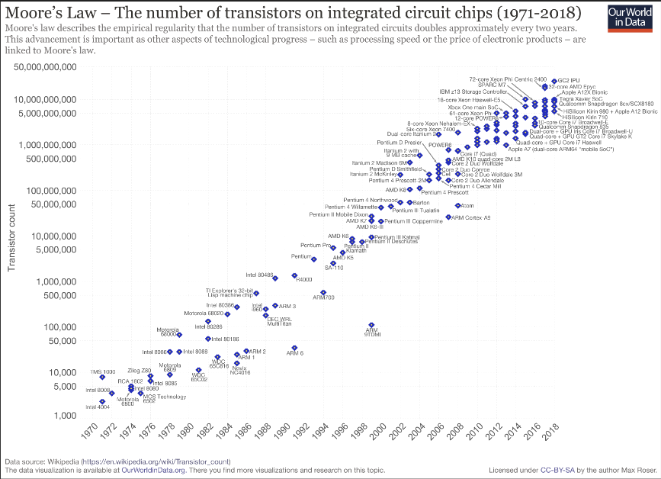CAO107 Computer Architecture and Operating Systems
Hello, dear friend, you can consult us at any time if you have any questions, add WeChat: daixieit
|
Assessment 1: Study of Basic Computer Architecture |
|
|
Subject Code and Title |
CAO107 Computer Architecture and Operating Systems |
|
Summative or Formative |
Summative |
|
Summative Assessment Number |
Assessment 1: Workbook |
Task Instructions
To complete this assessment, you must:
· Make sure to read the questions carefully and understand them before you start.
· Answer ALL questions.
· Show your work and the steps taken for each answer. Provide examples for your discussions and answers to demonstrate your thorough understanding. Partial marks will be awarded for the correct work even if the final answer is incorrect.
· The weighting of each question is indicated in brackets () at the end of each question.
Submission Instructions
This assessment should be submitted online:
· Name and save your file as “CAO107_Assessment1_LastName_FirstName.pdf”
· Submit your file via the Assessment 1 Submission link found under the Assessment tab in the main navigation menu.
· You can see your Learning Facilitator’s feedback via the Grade Centre in the LMS portal (My Grades).
Question 1: Computer Architecture History (20 Marks)
Moore's Law states that the number of transistors on a microchip doubles every two years, though the cost of computers is halved.
Do you agree with Moore’s Law? Is it still valid? Explain your answer.
You are required to add a historical diagram and its description to support your answer/to justify your answer. (max. 200 words)

Answer here: I believe Moore's Law will become obsolete in the future. Moore's Law has been a significant principle in the history and development of the computer industry, stating that the number of transistors on a microchip doubles every two years, while the cost of computers is halved. However, in recent years, it has faced challenges. According to Moore's Law, transistors, as the fundamental building blocks of computers, largely determine the performance of computer chips. Over the past few decades, the exponential increase in the number of transistors on computer chips has led to explosive performance growth, accompanied by significant cost reductions. However, as time progresses, transistor size has become a major issue, as it approaches physical limits. The manufacturing complexity required to continue doubling transistor counts at the same pace has made it increasingly difficult. Therefore, the cost has not decreased significantly, as manufacturing processes become more expensive.
The diagram illustrates the change in the number of transistors on microprocessors over time, along with Moore's Law predictions. Initially, the growth in transistor count closely matched Moore's Law predictions, but in recent years, the growth rate has slowed. This indicates that Moore's Law is facing difficulties in maintaining its original pace, attributed to factors such as approaching physical limits of transistor size and increasing manufacturing costs.
Question 2: Numbering System (6 x 5 marks = 30 Marks)
To understand computer architecture, basic knowledge of Decimal, Binary, Octal, and Hexadecimal number systems is essential. Perform conversion between number systems without using a computer or calculator. Perform binary, decimal, and hexadecimal conversion as given below. You should write your answers step-by-step i.e., demonstrate the conversion steps how did you calculate your answer.
2.1 Covert the following decimal number to Binary.
(i) 120
(ii) 230
(iii) 170
Answer here:
2.2 Covert the following Hexadecimal numbers to Binary.
(i) D6AB16
(ii) FE2C16
(iii) A9DE16
Answer here:
2.3 Covert the following Hexadecimal numbers to Decimal.
(i) E616
(ii) F8C16
(iii) CDBA16
Answer here:
2.4 Perform the following unsigned binary additions/subtractions and determine the validity of the result for 8-bits. For verification convert the numbers and results to decimal.
|
01 |
0111 10012 + 0100 00012 ----------------------------
|
02 |
0111 10012 + 0100 00012 ----------------------------
|
|
03 |
0101 11102 - 0011 01102 ----------------------------
|
04 |
1100 11112 - 1101 00012 ------------------------------ |
Answer here:
2.5.1 Evaluate the following expressions.
(i) (True AND False) OR False
(ii) (False XOR True) AND (False or True)
(iii) (False AND False) AND (True and True)
(iv) (NOT False OR NOT True) NOT (True OR False)
Answer here:
2.6 After completing parts 2.1 to 2.5, discuss why binary and hexadecimal number system are important in computer operations. You may consider why ASCII code is used in computer operations etc instead of decimal numbers. (max 150 words)
Answer Here:
Question 3: Computer Architecture and Memory (3 x 10 marks = 30 Marks)
(1) Discuss the Reduced Instruction Set (RISC) and Complex Instruction Set (CISC) computer architectures. In which applications (or scenarios) are these architectures preferred one over other?
(2) What are the types of buses used in computers?
(3) Discuss the following:
a. – The performance parameters of memory
b. – What are the design constraints of computer memory?
c. – How can you make a trade-off among these design constraints?
(max. 400 words)
Answer here:
Question 4: Instruction Cycle and Addressing Modes (2 x 10 marks=20 Marks)
(1) What are the four actions involved during instruction execution? Explain the Fetch cycle or CPU cycle with a diagram by considering any basic instruction execution in the processor.
(2) Describe the function of the following code and state which addressing mode is used in each instruction.
LDI R16, 10
LDI R20, 0
LDI R21, 3
LOOP: ADD R20, R21
DEC R16
BRNE LOOP
OUT PORTB, R20
Answer here:
2024-03-20